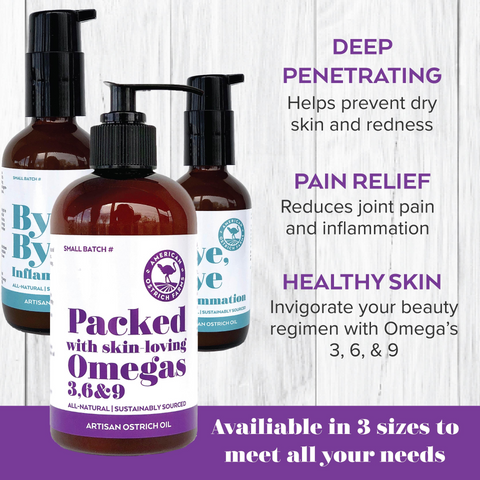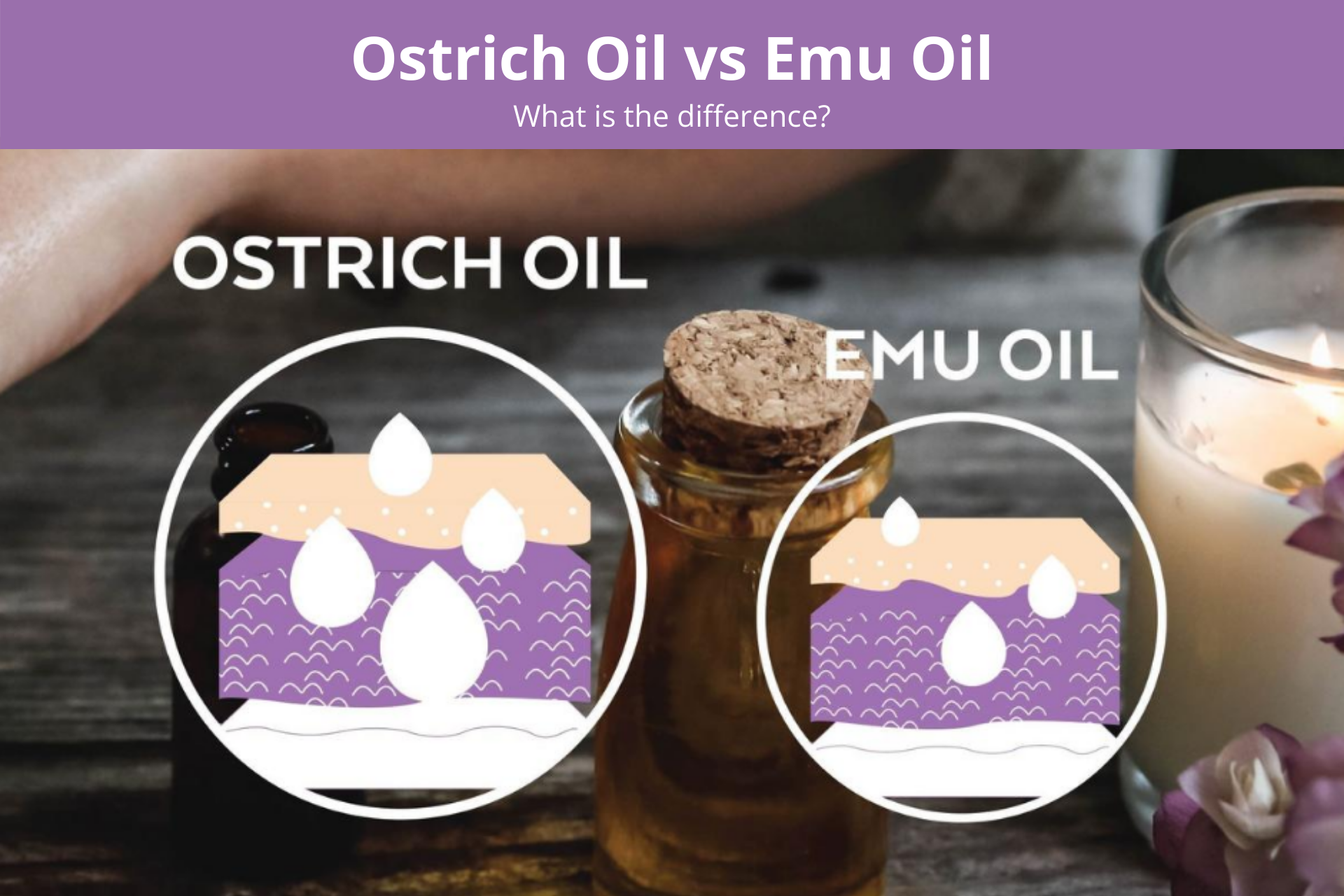Ostrich oil and emu oil are so similar that you wouldn't know the difference while applying them onto your skin. However, there are a few important differences between ostrich oil and emu oil.
First, the similarities between ostrich and emu oils...
Both emu and ostrich oil can help wounds heal faster, aid in normalization of tissue, prevent and reduce scars and stretch-marks, reduce itching & redness, soothes sunburn, and promotes scalp, hair, and joint health. They are both hypoallergenic and non-comedogenic (does not clog pores), making these oils very effective moisturizers for people who suffer from skin problems such as acne or rosacea.
Now, on to the differences...
Although very similar to emu oil, FDA Certified laboratories have proven that ostrich oil – consisting of over 70% oleic acid and palmitic acid – has higher skin-permeability than emu oil which allows it to better penetrate and hydrate the skin, enabling superior results.
This superior delivery of nutrients deep into the skin is an essential property for any skincare product, and for this reason, many Japanese skincare companies have switched from incorporating emu oil into their products to using ostrich oil instead to ensure that the nutrimental additives in their premium cosmetic products are able to most effectively penetrate into the deeper skin layers.
Topical omega fatty acids 3, 6, and 9, and in particular, Omega 3, strengthen and smooth the surface of the skin, calm signs of external stress like sensitivity and redness, and contain anti-aging antioxidants. While ostrich oil has similar levels of Omegas 6 and 9 as emu oil, it has approximately 10x the amount of the all-important Omega 3 fatty acid compared to emu oil. Omega-3 fats are renowned for their powerful health benefits, including improving skin barrier function by sealing in moisture and keeping out irritants, lowering inflammation, reducing markers of heart disease, reducing acne, and protecting against dry, red, and itchy skin.
Because of the transdermal properties and high levels of omega fatty acids, Ostrich oil doesn’t leave any mess or stickiness after use and is a more effective skin hydrator than any other natural oil, including emu oil.

We'd love to hear if you currently use either ostrich or emu oil and what differences you notice. Please let us know in the comments below, and visit our ostrich oils & soaps page here to learn more and buy now!






